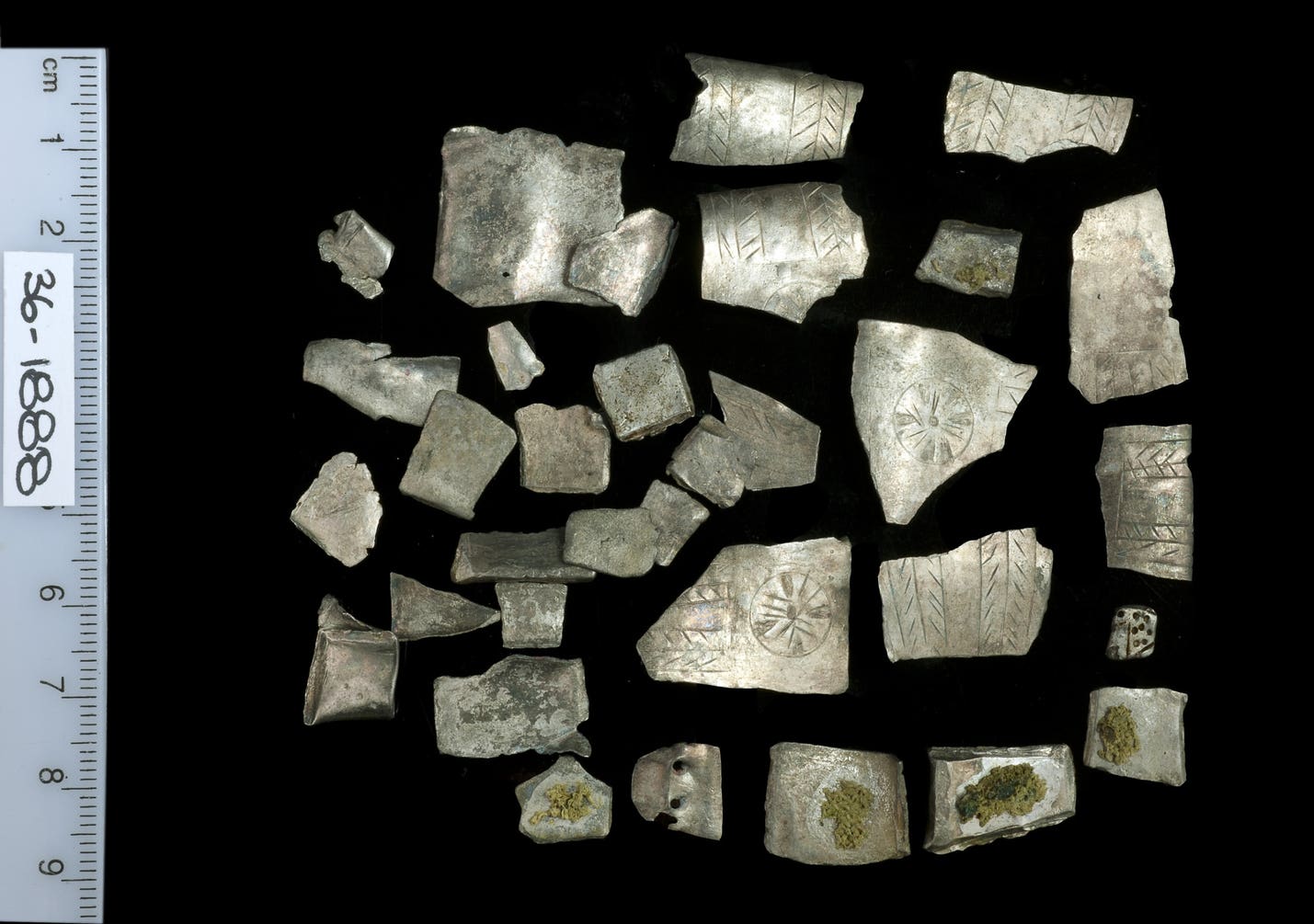A groundbreaking study from the University of Haifa revealed that silver served as a standardized form of currency in the Land of Israel as early as 3,600 years ago—long before the invention of coins. Published in the Journal of World Prehistory, the research analyzed more than 230 silver items from 19 archaeological hoards, including broken jewelry, cut pieces, and ingots. The findings indicate that by the 17th century BCE, silver had moved beyond ornamental use and functioned as a medium of exchange, demonstrating the existence of an organized and sophisticated economy in the ancient Levant.
This economic practice predates similar systems in Egypt and Greece, making the Land of Israel one of the earliest regions to adopt such a structured approach to trade. Though gold briefly replaced silver as the dominant medium of exchange during the Late Bronze Age, silver regained its prominence by the 13th century BCE. From the 12th century BCE onward, the increasing number and geographical spread of silver hoards reflect the growth of a true market economy across the region.
Archaeologists have also found evidence of long-distance trade networks underpinning this early monetary system. Many of the silver fragments originated in Anatolia, modern-day Turkey, pointing to robust economic ties between the Levant and Asia Minor centuries earlier than previously believed. These pieces, known as hacksilber, were intentionally cut into portable, divisible portions, making them ideal for transactions in a world that lacked minted coinage. Sites such as Tel Shiloh, Tel Gezer, and Tell el-Ajjul have yielded significant hoards, underscoring the widespread use of silver as “proto-currency.”
In the Hebrew Bible, silver (kesef) holds a prominent place as a medium of value, exchange, and sanctity long before the advent of minted coinage. The Torah frequently mentions silver as a standard of wealth and a means of payment. Abraham famously purchased the Cave of Machpelah from Ephron for “four hundred shekels of silver, current with the merchant” (Genesis 23:16), illustrating that silver was weighed and valued by weight rather than stamped with a face value. Similarly, the Tabernacle’s construction relied heavily on silver, with each Israelite contributing a half-shekel of silver as part of the census tax (Exodus 30:13). This mandatory contribution symbolized equality before God—every Jewish male, regardless of wealth, was required to give the same amount, emphasizing communal responsibility in maintaining the sanctuary. The prophets also echo the sanctity of silver and gold as belonging ultimately to God, as in Haggai 2:8: “Mine is the silver, and Mine is the gold, says the Lord of Hosts,” reinforcing the idea that material wealth is divine property entrusted to humankind.
The Talmud continues this understanding of silver as possessing inherent value, distinguishing it sharply from coinage backed by governmental decree. In tractates such as Kiddushin and Bava Metzia, “kesef” is often understood to mean actual silver—measured by weight—rather than minted coins, especially in contexts of betrothal, debt repayment, and property transactions. The Rabbis debate whether one may fulfill obligations with coins whose value derives from state endorsement or whether true fulfillment requires metal of intrinsic worth. For example, a discussion in Bava Metzia (44a) considers whether devalued coinage can serve as proper payment, implying that silver’s enduring worth lies in its substance, not in any external guarantee.
Moreover, the Talmud often treats silver as the “default currency” of Jewish law. Mishnaic measures of fines, dowries, and valuations are commonly denominated in silver shekels, reinforcing its status as a stable, universal medium of exchange. This perspective underscores a deeper philosophical and halachic point: while coinage can fluctuate in value and lose legitimacy, silver retains an objective, tangible worth. Thus, in Jewish thought, silver embodies permanence and trustworthiness in economic dealings, a perspective rooted in biblical precedent and refined by rabbinic jurisprudence.
Over time, the silver-weight economy gave way to minted coinage. By the Persian period in the 6th–5th centuries BCE, silver coins struck outside of Israel began to circulate locally. However, the discovery of one such coin cut in half suggests that people continued to rely on the older practice of weighing silver even after coins became available. During the Second Temple period, Tyrian shekels—renowned for their high purity—became the currency of choice for the annual Temple tax in Jerusalem, marking a fusion of monetary and religious life.
The role of silver reached a symbolic climax during the Jewish revolt against Rome in 66–70 CE. For the first time, Jews minted their own coins, including shekels, half-shekels, and quarter-shekels, inscribed in Hebrew and adorned with ritual imagery. These coins not only financed the rebellion but also proclaimed Jewish sovereignty and religious devotion in the face of imperial domination. One rare half-shekel from the first year of the revolt, recently uncovered near En Gedi, bears the words “The Holy Jerusalem” alongside a chalice, while later coins from the fourth year carry the inscription “For the Redemption of Zion” and depict symbols of the Sukkot festival.
Taken together, these discoveries illustrate the central role of silver in the history of the Land of Israel. What began as cut fragments used in Bronze Age marketplaces evolved into coinage that carried profound religious and national significance. The metal’s journey from raw commodity to political statement reflects the broader story of a land whose economy, culture, and identity were deeply intertwined with the silver that passed through its hands.




